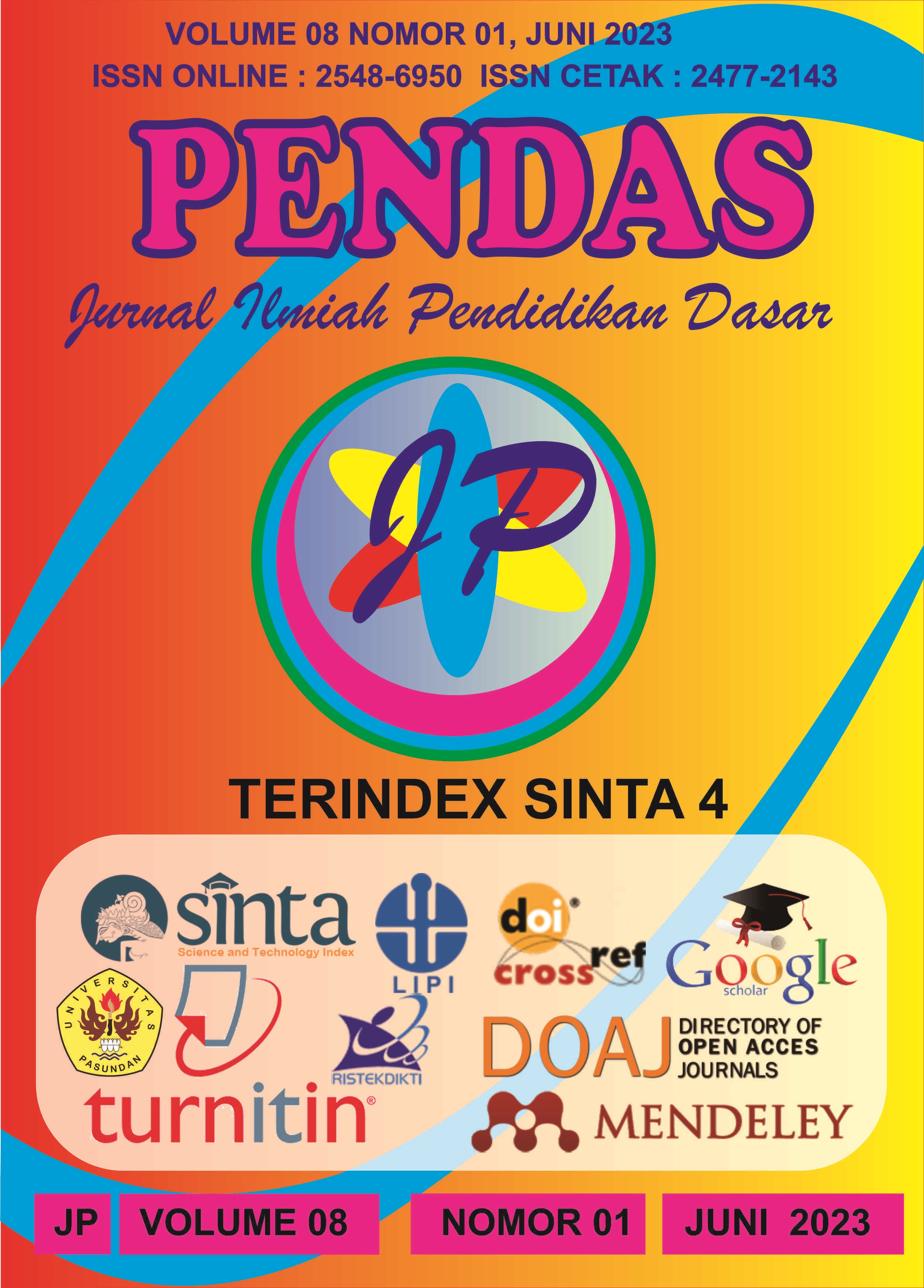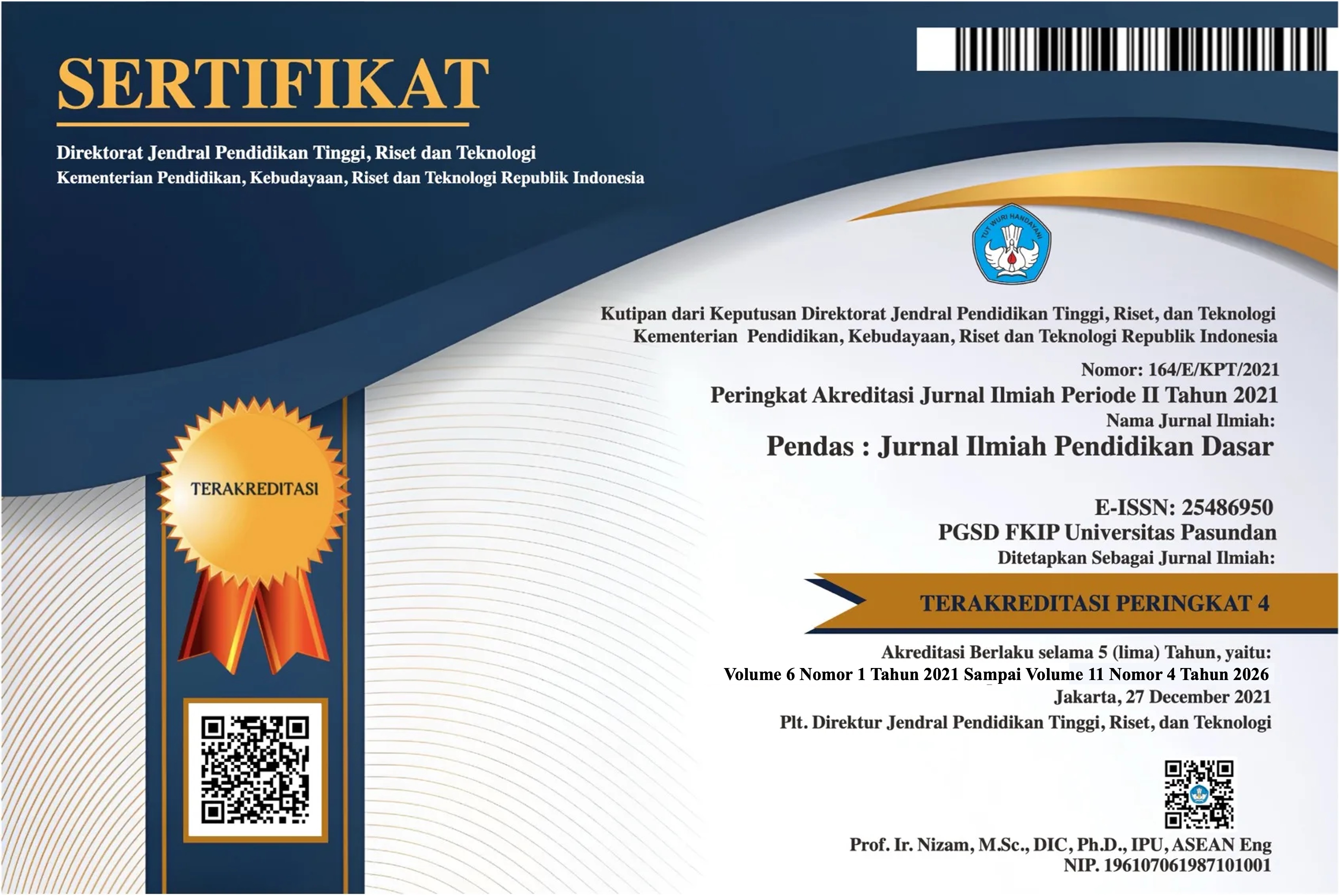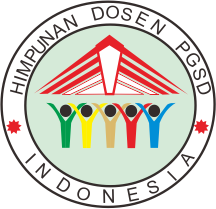PENERAPAN MODEL PEMBELAJARAN TWO STAY TWO STRAY DALAM MENINGKATKAN KEAKTIFAN DAN HASIL BELAJAR IPA SD
DOI:
https://doi.org/10.23969/jp.v8i1.8934Keywords:
Two Stay Two Stray learning model, activeness, learning outcomesAbstract
The background of the fifth grade action research at SD Negeri 05 Senakin based on the results of observations and interviews was that students were less active and had low learning outcomes in science lessons. Only 20% of students are active in learning activities, students with complete science scores only reach 30%. The teacher only uses the lecture method in delivering the material. To overcome this problem the researcher uses the Two Stay Two Stray learning model. This research method is Classroom Action Research. This research was carried out in 2 cycles where each cycle consisted of 2 meetings with the stages of planning, implementing, observing and reflecting. The research subjects were conducted in class V with 20 students. Data collection was carried out by learning achievement tests, observing teacher and student activities in TSTS learning and interviews. The results obtained: 1. the implementation of Two Stay Two Stray learning on science material can be done well, 2. The activity of students in cycle 1 in the good category is only 22.5% while in cycle 2 it has increased by 80% and the very good category is 2.5% of students are active in learning activities. 3. Student learning outcomes in cycle 1 amounted to 47.5% and experienced an increase in cycle 2 of 90%. Based on the results obtained, it can be interpreted that the Two Stay Two Stray learning model can be used as an alternative learning model that can be applied to increase the activity and learning outcomes of students in class V SD Negeri 05 Senakin.Downloads
References
Aisyah, H. (2014). Peningkatan Keaktifan Belajar Siswa Matematika Melalui Metode Kerja Kelompok. Jurnal Penlitian Pendidikan, Vol. 1, 15.
Amri. (2015). Implementasi Pembelajaran Aktif Dalam Kurilulum 2013. Jakarta: Prestasi Pustaka.
Anam. (2016). Pembelajaran Inovatif. Yogyakarta: Pustaka Pelajar.
Aqib, Z. (2016). Penelitian Tindakan Kelas Untuk Guru SD, SLB, dan TK. Bandung: Yrama Widya.
Arikunto. (2012). Prosedur Penelitian Suatu Pendekatan Praktek. Jakarta: Rineka Cipta.
Candrasari, E. N. (2014). Peningkatan Keaktifan Belajar Siswa Dalam Pembelajaran Matematika Dengan Menggunakan Strategi Team Assisted Individualization (TAI). Jurnal Pendidikan, 25.
Choiriyah, I. N., & Airlanda, G. S. (2019). Peningkatan Proses dan Hasil Belajar Muatan IPA Melalui Model Pembelajaran Two Stay Two Stray (TSTS) Siswa Kelas 4 Sekolah Dasar. Jurnal Pendidikan Tambusai, 359.
Daha, R. (2021). Meningkatkan Hasil Belajar Ipa Melalui Pemanfaatan Lingkungan Sebagai Media Dalam Pembelajaran Di Kelas IV SD Negeri Longka Kabupaten Gowa Tahun Ajaran 2020/2021. Skripsi, 4.
Dait, T. D. (2018). Peningkatan Keaktifan dan Kemampuan Siswa Menjawab Soal Pemahaman Satuan Waktu Menggunakan Model Pembelajaran Kooperatif Tipe STAD dan Game Puzzle di Kelas III A SDN Lempuyangan 1 Yogyakarta. Skripsi, 53, 57-59.
Fajri, E. Z., & Senja, R. A. (2014). Kamus Lengkap Bahasa Indonesia. Jakarta: Difa Publisher.
Hasibuan, I. A., & Mansurdin. (2021). Penerapan Model Two Stay Two Stray untuk meningkatkan hasil belajar Siswa kelas V Sekolah Dasar. journal of Basic Education Studies, 4, 199-200.
Hasiyati, R. E. (2015). Peningkatan Keaktifan Belajar Melalui Strategi Learning Cycle Pada Siswa Kelas VII MTs Negeri Filial Pulutan Tahun Ajaran 2014/2015. Skripsi, 4.
Hidayat, T. M., & Muhson, A. (2018). The Impact of Think Pair Share and Two Stay Two Stray Learning Model Towards Learning Outcomes and Cooperation Ability. International Journal of Science and Research (IJSR) , 1, 57.
Hudi, I. R. (2015). Penerapan Model Pembelajaran Kooperatif Tipe Two Stay Two Stray Untuk Meningkatkan Prestasi Belajar Siswa . Jurnal Penelitian , 5.
Indra. (2016). Upaya Peningkatan Keaktifan Dan Hasil Belajar IPA Melalui Model Pembelajaran Kooperatif Tipe Two Stay Two Stray Pada Siswa Kelas V SD Negeri Mangunsari 05 Salatiga Semester II Tahun Ajaran 2015/2016. Skripsi, 5.
Indriasari, D., & Fasha, L. H. (2022, January 01). Pembelajaran Pemahaman IPA Materi Sumber Daya Alam Melalui Model Pembelajaran Two Stay Two Stray Pada Siswa Kelas IV SD. Journal of Elementary Education, 5, 169.
Irfanto, W. Y., Mustaji, & Jacky, M. (2019). Effect of Two Stay Two Stray Learning Model and Learning Style against Learning Outcomes. International Journal of Science and Research (IJSR), 8, 4.
Kriyantono. (2020). Teknik Praktis Riset Komunikasi Kuantitaif dan Kualitatif . Rawamangun: Prenada Media Group.
Kumala, F. N. (2016). Pembelajaran IPA SD. Malang: Ediide Info Grafika.
Kusumah. (2012). Mengenal Penelitian Tindakan Kelas. Jakarta: PT Indeks.
Majid, A. (2013). Strategi Pembelajaran. Bandung: Remaja Rosdakarya.
Majid, A. (2015). Strategi Pembelajaran. Bandung: PT. Remaja Rosdakarya.
Marlina. (2012). Penggunaan Media Lingkungan Untuk Meningkatkan Hasil Belajar Murid Pada Materi Pengenalan Bagian-Bagian Tumbuhan Di Kelas IV SD Inpres Suli Kecamatan Balinggi. Skripsi, 17.
Mulyasa. (2012). Manajemen Pendidikan Karakter. Jakarta: PT. Bumi Aksara.
Nasrah. (2019). Pengaruh Penggunaan Metode Outdoor Study dengan Memanfaatkan Lingkungan Terhadap Hasil Belajar IPA Pada Murid Sekolah Dasar. Jurnal Sainsglobal, 26.
Ningsih, d. (2017). Improving the Students "Activity and Learning Outcomes on Social Sciences Subject Using Round Table dan Rally Coach of Cooperative Learning Model. Journal of Education, Vol 8, 1.
Sugiyono. (2016). Metode Penelitian Kuantitatif, Kualitatif dan R&D. Bandung: PT Alfabet.
Wisudawati, A. W., & Sulistyowati, E. (2014). Metodologi Pembelajaran IPA. Jakarta: Bumi Aksara.
Yusuf. (2015). Metode Penelitian: Kuantitatif, Kualitatif, dan Penelitian Gabungan. Jakarta: Prenada Media Group.
Downloads
Published
Issue
Section
License
Copyright (c) 2023 Pendas : Jurnal Ilmiah Pendidikan Dasar

This work is licensed under a Creative Commons Attribution 4.0 International License.



















